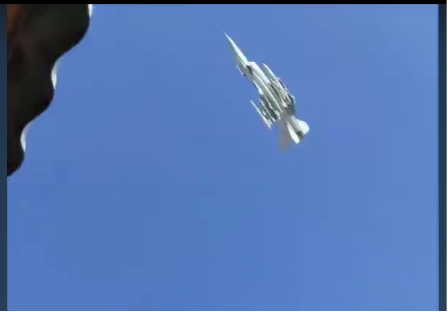General Arnu Stallman, commander of the Dutch Air Force, anticipates that F-16 fighters will be operational in Ukraine this summer, The Guardian reports. Ukrainian officials believe these aircraft will help protect Kharkiv from Russian corrected aerial bombs (KABs).
“During summertime, everything is falling into place,“ General Stallman said, speaking in front of two F-16s inside a hangar at the base, where a recent program to train Ukrainian Air Force maintenance instructors had just ended.
JOIN US ON TELEGRAM
Follow our coverage of the war on the @Kyivpost_official.
Belgium, Denmark, the Netherlands, and Norway have committed to supplying Ukraine with approximately 80 US-made F-16 fighters, or about three squadrons of aircraft.
Despite the initial plan, the program faced delays due to delivery and training challenges. Training for both pilots and ground personnel has proven to be a complex process.
“It’s not just the pilots who need training; technicians and maintainers also require thorough instruction. We’re providing comprehensive support training to ensure they can effectively maintain the aircraft. So, everything has to come together,“ Stallman said.
Dutch Defense Minister Kaisa Ollongren confirmed that the first deliveries are expected this summer.
Addressing criticism over delays, she said, “I completely understand the Ukrainian position, they want to do this as fast as possible… We are doing the project as fast as we can, we are really stretching our capacity.“

ANALYSIS: Confirmed Visual on Ukrainian F-16 Loaded for Strike Mission
“The F-16s are really much more complicated than the systems the Ukrainian Air Force was using so far… You cannot just hop over several steps, you have to take every step of the process, but also we want to deliver them as quickly as possible,“ she explained.
Ollongren also mentioned that Ukraine could use the Dutch-donated F-16s for defensive purposes inside Russia as long as it complied with international laws of armed conflict (LOAC). Denmark has made similar allowances for its donated jets.
“We have seen that it is necessary for Ukraine to be able to strike inside Russia. Otherwise, Russia will always have an advantage. Allowing Ukraine to use weapons across the border enhances the efficiency of their military actions,“ said Ollongren.
Ukraine has been eagerly awaiting the arrival of these fighter jets hoping they will alter the dynamics of the war and force Russia to adopt more conservative tactics near the border.
“The Russians will be forced to change their tactics. We will be able to target their planes and missiles more effectively, and it will be really difficult for them to keep using KAB [corrected] air bombs, which they need to launch from 50 to 70km away,“ Anatoly Khrapchinsky, an aviation expert and former Ukrainian military pilot, commented to the Guardian.
Justin Bronk, an aviation analyst at the RUSI think tank, emphasized the importance of deploying the F-16s when the pilots and ground teams are fully prepared, rather than rushing for political reasons.
The realistic advantages of having trained to use all the advanced weapons, the integration capability with force-multiplying airborne, ground-based and space-based assets via datalink and other methods, and the ability of capable flight leads to make all this work with synergy takes significant time.
For US, Norwegian, Dutch, Danish, Belgian and other NATO pilots to master these capabilities, after earning their wings as a military pilot or even with experience in previous Western fighter aircraft, this process typically takes two years, according to a former F-16 pilot and International Military Training instructor on the Kyiv Post editorial staff.
F-16s are a significant upgrade from Ukraine’s current fleet, which includes the MiG-29, Su-24, Su-25, Su-27, all of which are heavily worn and outdated in the modern aerial battlespace.
The F-16s offer a larger combat load and a more powerful radar system, which would help address radar limitations faced by Ukraine during the war. Additionally, F-16s are known for their intuitive controls and displays, making them more pilot-friendly.
You can also highlight the text and press Ctrl + Enter











